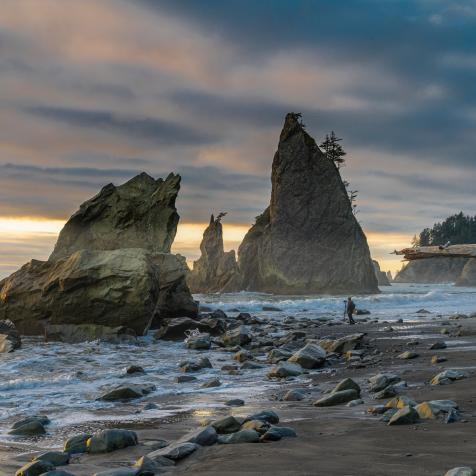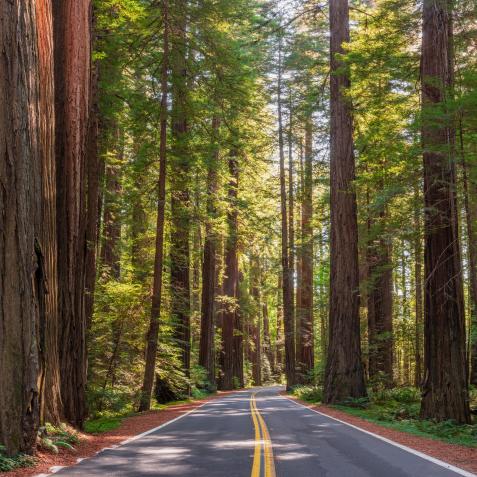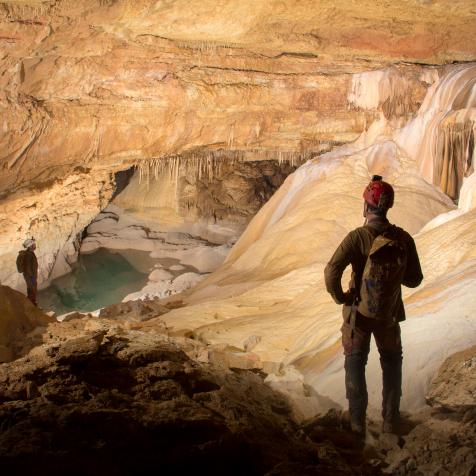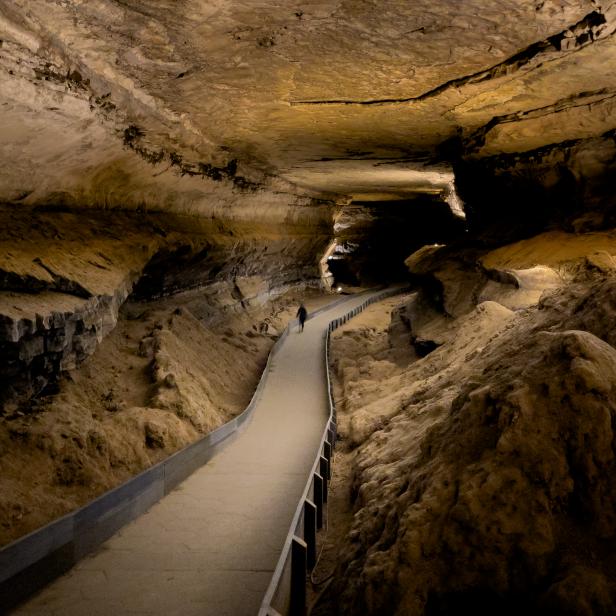
Posnov
Exploring the World’s Longest Cave System
The world’s longest cave system is a gargantuan labyrinth of 420 miles of twists and turns and nooks and crannies, with limestone travertine stalactites dripping from the ceilings.
Perhaps even more incredible is that it’s smack bang in the middle of Kentucky.
Mammoth Cave National Park preserves this unique and historical natural wonder. As large as the limestone cave system is, park officials, estimate there may be another 600 miles of cave passageways that have yet to be explored.
In addition, more than 200 caves exist in the park that are disconnected from the larger system.
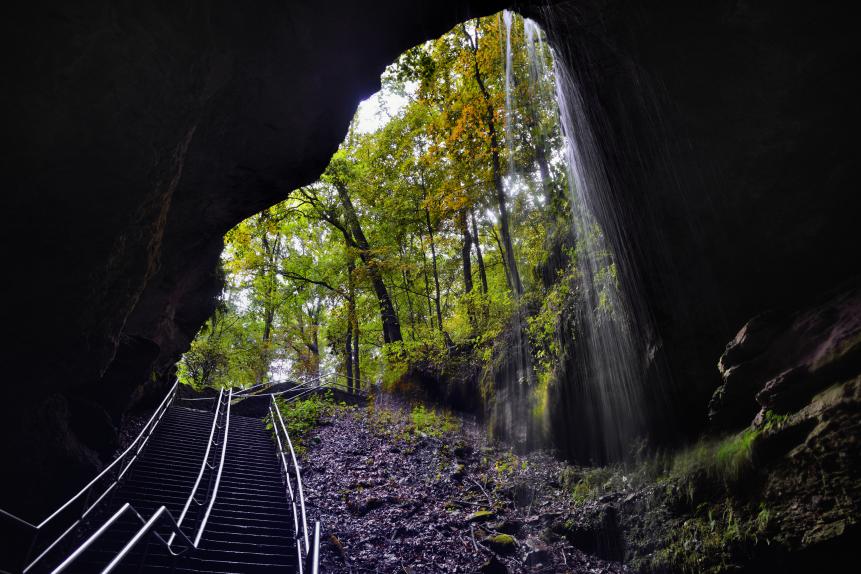
Mark C Stevens
Rain creates a waterfall effect on the open mouth of a cave.
The incredible rock formations have resulted in the park being recognized as a World Heritage Site, thanks to its extraordinary size and scientific importance – making it one of only 13 natural US sites with that title.
The caves were created naturally by the process of limestone erosion, which is known as “karst topography”. Rain and rivers slowly dissolve and shape soft limestone, which creates the vast underground network. The system is still being shaped and carved today. Not only are they are a stunning destination to visit, but the system also provides drinking water for roughly 40% of the US population – and they’re of historical significance too.
The caves act as a time capsule that preserve over 5,000 years of human history – and the caves’ first explorers were Native Americans, who mined the upper levels of Mammoth Cave. Thanks to the cave system’s atmosphere and natural protection from any kind of human disturbance, the archaeological sites have been left in great shape. Several sets of Native American remains have been recovered, providing fascinating evidence of pre-Columbian funerary practices.
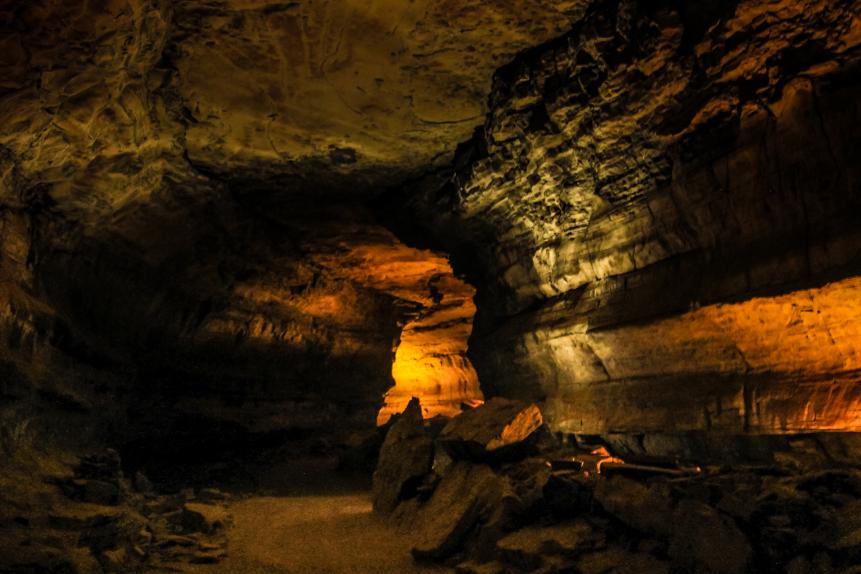
sreenath_k
Passage within Mammoth Caves National Park.
Mammoth Cave was established as a national park thanks to strong local support. Back in the 1920s, Secretary of the Interior Hubert Work created the Southern Appalachian National Park Commission in 1925 to survey proposed park sites, including the caves. After years of work acquiring the land for the park, as well as building roads, trails, and public facilities, Mammoth Cave National Park was established on July 1, 1941.
Pioneering African Americans were some of the first cave guides, and are responsible for some of the more recently discovered passageways. Stephen Bishop, who was a slave, worked in the cave from 1838 to 1856 and ventured beyond the tour routes that had been established. He crossed a terrifying drop called the “bottomless pit” to discover unmapped areas of the cave system. Although they were unrecognized at the time, pioneers like Bishop helped spark the golden age of cave exploration.

Mark C Stevens
Historic cave entrance in Mammoth Cave National Park.
The park now receives around 2 million visitors a year, with roughly a quarter taking a tour of the caves – everything from a cultural tour to the more adventurous scrambling tours on offer. The cave supports more than 130 wildlife species, such as the eyeless cavefish, which has adapted to the lightless environment by no longer growing eyes, and the cave crayfish.
Mammoth Cave National Park is also much more than just a cave; its surrounding forest contains one of the most diverse habitats in the country. There are miles of trails open for horseback riding, with kayak and canoe trails and great fishing spots. There are also more than 1,300 flowering species in the forest, and animals like wood warblers, thrushes, and bald eagles can regularly be spotted.







































































